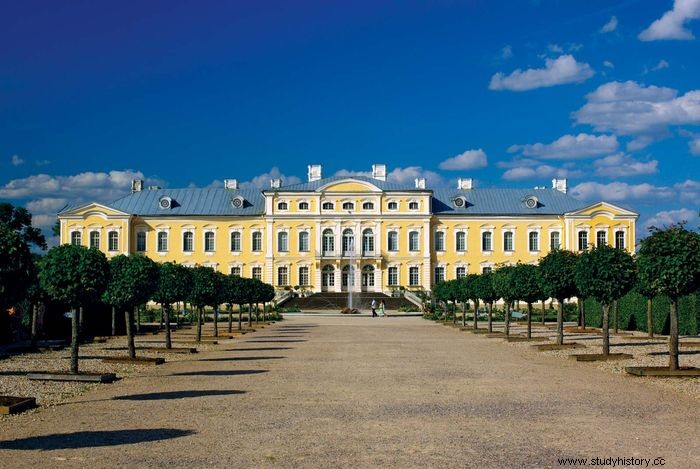Kurland , also Kurland , Latvian Short memes , region on the Baltic Sea coast, south of the western Dvina and named after its inhabitants, the Latvian tribe of Kuronen (Course, Cori, Cours; Latvian:Kursi). The Duchy of Courland, founded in 1561, included this area and Semigallia (Zemgale), a region east of Courland.

After the The Order of the Brothers of the Sword (from 1237 the Livonian Knights or the Order of German Knight of Livonia) conquered the Latvian territories north of the western Dvina and led a crusade ( um 1220) against the Curons, who had established their own tribal empire by the end of the 9th century. 1230 the Kuronian King To avoid the rule of the Order, Lammekinus (Lamikis) closed directly with the papal legates peace , accepted baptism and became vassal of the Pope. However, the Order refused to honor this agreement. The knights prevented the king from receiving his crown from the pope, and subdued the Kurons (1269) after from the Bishop of Courland (1234) nominal possessed two-thirds of the country and ruled them as their feudal lords for the next 300 years.
In 1561 the Livonian Knights dissolved their order and united Courland and Semigallia (which they had conquered around 1290) into the Duchy of Courland , which became a Polish fief. The duchy created for the last master of the order, Gotthard Kettler, and his descendants flourished in the 17th century, particularly under the duke's reign Jacob (r. 1640–82). He encouraged the development of industries, including shipbuilding, which provided the basis for a strong navy, a sizable Merchant Navy and a lucrative Foreign trade made . He also maintained friendly relations with the great European powers, and the duchy became strong enough to try to establish colonies in West Indies (Tobago; 1645–65) and West Africa (Gambia; 1651–65).
Courland's prosperity declined after 1658, however, when Sweden went to war against Poland Jelgava (Mitau, the capital of Courland) conquered and conquered the duke. Jacob was returned to Courland in 1660, but his duchy had been severely weakened. Although his successors were able to maintain the splendor of the ducal court and dynastic ties to the sovereign houses Europe ( e.g. B Duke Friedrich Wilhelm married Anna in 1710, niece of Peter I the Great and future Empress of Russia), she impoverished the peasantry and allowed Russia Increase influence on Kurland. When the last Kettler duke died (1737), Russia's candidate Ernst Johann von Biron was elected as his successor. and when Biron fell from grace, there was a period of Russian-sponsored Saxon rule (1740–63). Finally, in 1795, during the third partition of Poland, the duchy was divided into the incorporated into the Russian Empire .
Under Russian administration the Latvian Serfs in Courland were liberated (1817), but they received no land, and the German nobility remained the favored class until at the end of the 19th century, when repressive Russification measures were imposed on both groups. In the 19th century, however, a strong Latvian nationalism Developed ; and in 1918, after the empire was dissolved by the revolution, Courland became part of the newly established independent state Latvia .
